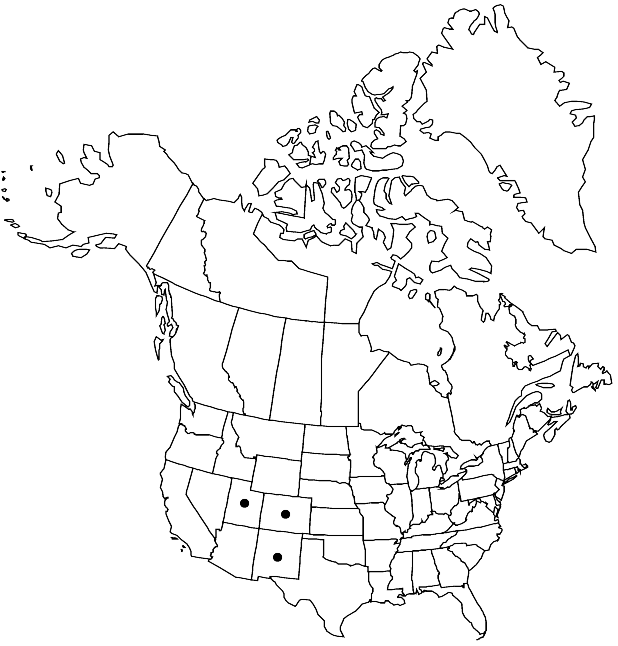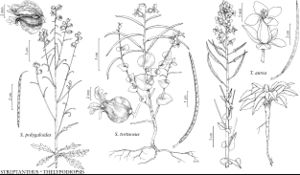Thelypodiopsis aurea
Bull. Torrey Bot. Club 34: 432. 1907.
Annuals or perennials; (short-lived); (glaucous), glabrous or sparsely pubescent basally. Stems branched basally and distally, (1.4–) 2–5 (–6) dm, (glabrous or sparsely pubescent basally). Basal leaves rosulate; petiole 0.5–4 cm; blade oblanceolate, 2–7 cm × 5–22 mm, margins irregularly dentate. Cauline leaves sessile; blade lanceolate to oblong, (smaller distally), base auriculate, margins entire, (surfaces glabrous). Racemes dense. Fruiting pedicels divaricate-ascending, straight, (5–) 6.6–13 (–15) mm. Flowers: sepals spreading to reflexed, yellow, 5–7.5 (–8.5) × 1.7–2.5 mm; petals yellow, spatulate to broadly oblong, 7–11 (–13) × 2–3.5 mm, claw 5–7 mm (to 2 mm wide); median filament pairs 5–6.5 mm; anthers linear, 3–4 mm; gynophore (slender), 2–6 (–8) mm. Fruits erect to divaricate-ascending, straight or slightly curved, torulose, 5–7.5 (–9) cm × 1.2–1.7 mm; ovules 72–98 per ovary; style subclavate, 0.5–2 mm; stigma 2-lobed. Seeds 1.2–1.5 × 0.6–0.8 mm. 2n = 22.
Phenology: Flowering Apr–May.
Habitat: Shrub communities on clay or, rarely, sandy soil
Elevation: 1200-2200 m
Distribution

Colo., N.Mex., Utah.
Discussion
Thelypodiopsis aurea is restricted to the Four Corners area and is known only from Montezuma County in Colorado, Sandoval and San Juan counties in New Mexico, and San Juan County in Utah.
Selected References
None.
Lower Taxa
"elongated" is not a number."thick" is not a number."dm" is not declared as a valid unit of measurement for this property."dm" is not declared as a valid unit of measurement for this property.
